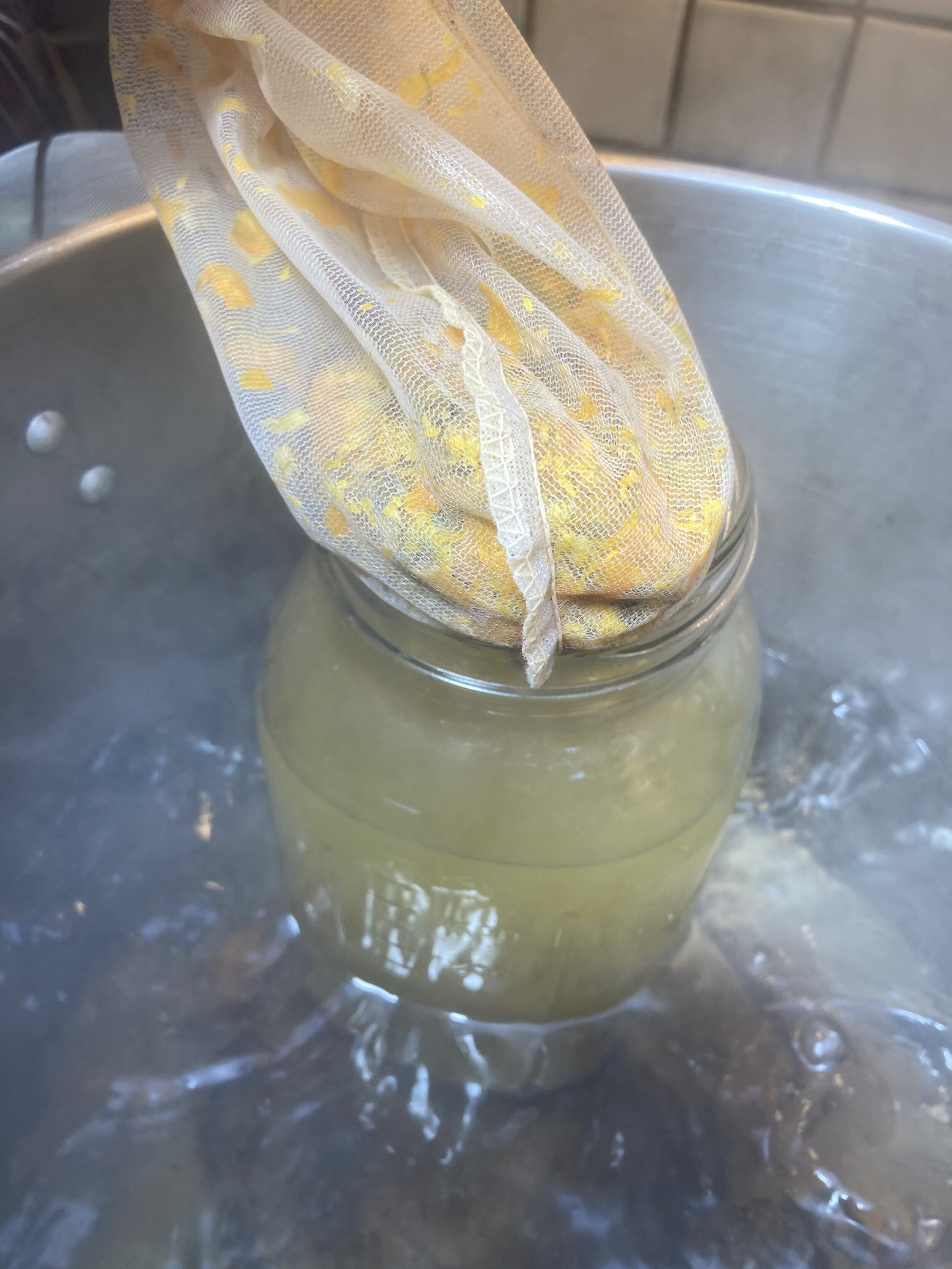Creeping Buttercup
Renunculus repens is native to large parts of the world including Asia, Europe and northwestern Africa. Here in British Columbia on the westcoast of Canada, it’s considered a pervasive invasive species. Creeping buttercup is spreading - covering large areas of disturbed field and urban habitat, where it creates monocultural patches, pushing out native species. On the plus side, the bright yellow flowers stretch on along the roads and highways in springtime.
Roadside attraction
This time of year, the roads are lined with buttercup and the waxy bright yellow flowers are visible, spread out like stars.
Focus on flowers
For this project, I decided to try dyeing with just the flowers. So much of my dyeing this spring has been flowering plants and in general I find that including the leaves and stems can push colours more into the greens. For this project, I wanted to see how bright a yellow I could get.
Numbers:
Collected 105 grams of flowers.
Wool skein weighting 12 grams, premordanted with alum (16% Weight of Fiber - WOF).
Dye to fiber WOF of 857% (105:12).
Chopped up
I started the process by first chopping up the flowers using scissors.
Into the sack
For dyeing these days, I’ve come to rely on mesh paint bags (either 1 or 5 gallon sizes). Here, I placed the buttercup into a 1-gallon mesh bag (available at most paint stores). The bag is then placed into a 2-liter glass jar and heated in a pot using the double boiler method.
This way, the buttercup was simmered (~80°C) for one hour and allowed to cool.
Removing the flowers
The nice part of using the mesh bag like this is that it can easily be removed leaving a dye vat ready for dyeing. I came across this method in a workshop by Alissa Allen (mycopigments). From here, the exhausted flowers can go straight into the composter.
Presoaked fiber
The wool skein was presoaked for about an hour in warm tap water. It was then added directly into the jar of dye liquid.
Yellows emerge
Presoaking the fiber allows it to sink completely into the liquid and allows for a more even colour uptake. Here the skein was simmered for an hour. I gave it gentle stirrings every 10 minutes or so and gave it a flip at the half way mark.
An hour later
After the hour, the yarn emerged a luminous buttery yellow. The shade is deep, cheerful and feels full of life.
Results
The deep yellow shades within the yarn came through beautifully. Buttercup flowers transfer their colour to yarn beautifully and is an undervalued local dyer. I’ll definitely be looking to scale up these results on more yarn.










